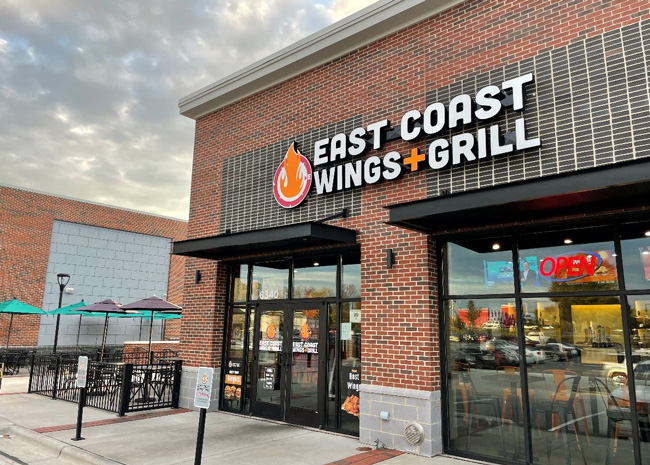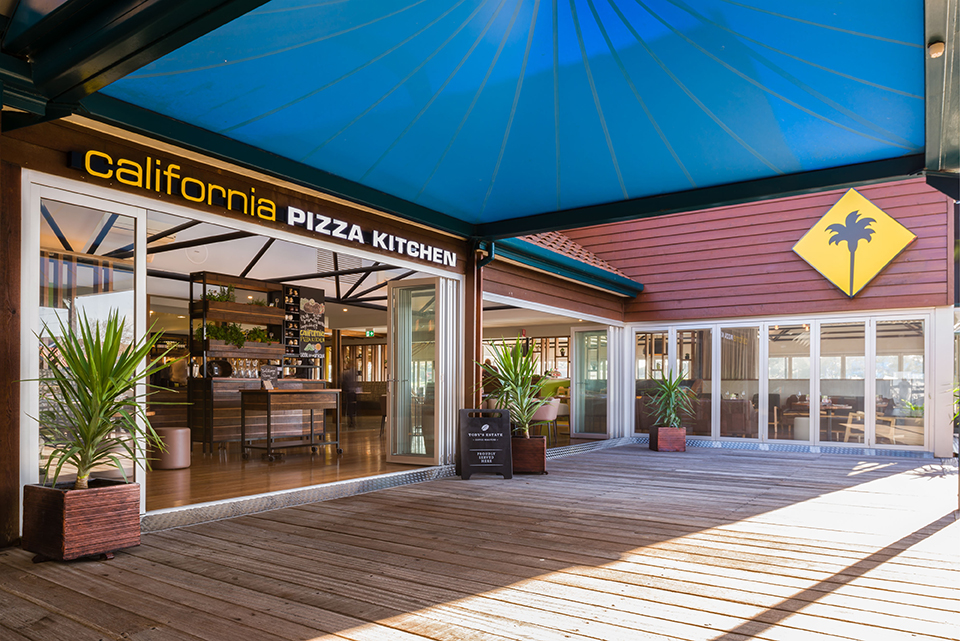Staying relevant in the ultra-competitive hospitality space means creating higher-quality experiences for patrons, according to Maxim Parkhomchuk, VP of construction and executive project manager at LOTT Restaurant Construction in Philadelphia. The LOTT team has collectively built over 400 restaurants throughout the United States since 1992.
Here, Parkhomchuk shares his insights on some of the top trends in restaurant construction he believes will continue to gain steam in 2020.
 Walnut folding doors separate each private dining room while also allowing them to be opened up to create a larger space for private events. Image by Jared Kuzia, courtesy of Dyer Brown.
Walnut folding doors separate each private dining room while also allowing them to be opened up to create a larger space for private events. Image by Jared Kuzia, courtesy of Dyer Brown.
The Height of Luxury
High-end finishes, grandiose designs and exclusive materials are making a comeback. The new 12,000-square foot Steak 48 concept currently under construction in the historical Atlantic building in Philadelphia is a prime example of the swing to a luxury dining experience. The $7 million project is loaded with custom materials from abroad. Companies are no longer seeking to cut corners or skimp when it comes to the show or overall patron experience. In the same vein, look for textured wall coverings, materials you want to touch, and innovative materials such as acoustical fabric ceilings and highly decorative industrial grade flooring.
Private Dining Suites
Primarily earmarked for large parties, expect to see more private dining rooms for smaller groups designed with a lot of thought. These rooms increase revenue for owners, allowing them to offer different menu options and also serve as overflow dining spaces on busy nights. Many private rooms are equipped with audiovisual equipment for meetings or to display photos for parties, but the technology is so well integrated into the design that when not in use, they disappear from view. Private rooms designed as swing spaces with rollaway doors or glass walls gives the restaurant versatility in usage.
Visible Kitchens
Open kitchens continue to be popular, allowing diners to be closer to the action. Steak 48 will feature a one-of-a-kind 1,500-square-foot expo kitchen with floor-to-ceiling glass wall surrounds, including adjacent booth seating peering directly into the expo kitchen. Aside from being incredibly clean and well organized due to all of the transparency, open kitchen concepts allow the customers to get intimate with the action and provide wonderful modes of observation.
High-Tech Communication Tools
Whether it’s utilizing a high-tech framework or platform for effective team collaboration on complex projects, using software that uses 3D modeling in every phase of the project or high definition photo and video scanning, there’s no denying the expanding role of technology. Virtual reality is now!
Bringing the Outdoors In
This trend will continue to get better with the use of higher tech products such as retractable roofs, accordion doors, outdoor fireplaces, all-weather heaters and all-weather rooftops. Restaurants that don’t have access to outdoor space are bringing the outdoors in using greenery, large glass windows, glass walls and oversized garage doors that can remain open in nice weather.
Fashionable and Functional Wine Storage
High-tech wine cases are becoming increasingly more visually stunning design statements in U.S. restaurants. No longer relegated to the cellar, restaurant wine collections are on full display in gorgeous glass cases in the bar or dining room. It’s often a challenge to incorporate an elaborate wine storage unit into front of the house designs, and construction teams need to coordinate multiple sophisticated engineering systems — refrigeration, lighting and HVAC controls — into an aesthetically pleasing and functional design. Between the orchestration of material deliveries, the coordination of tradespeople, and the challenges of existing space fit-outs (as opposed to new construction), the creation of fashionable and functional wine storage can be quite tricky, but the LOTT team agrees that the visual and capital benefits for operators make it well worth the aggravation.



